Record holder for vitamin content - sweet pepper "Ramiro" with an exotic appearance
Ramiro pepper is a vegetable that enjoys stable popularity. Its fruits are juicy and tasty, high in vitamins and minerals. This variety differs from other sweet peppers - it looks similar to Chilean peppers. Bred by Ramiro in Italy. Widely cultivated in Latin America and Europe. It is also successfully grown in Russia.
What type of pepper is this?
Ramiro sweet pepper seeds are almost never found on sale.. Gardeners who want to grow an original vegetable purchase peppers in grocery stores and extract the seeds from the fruits.
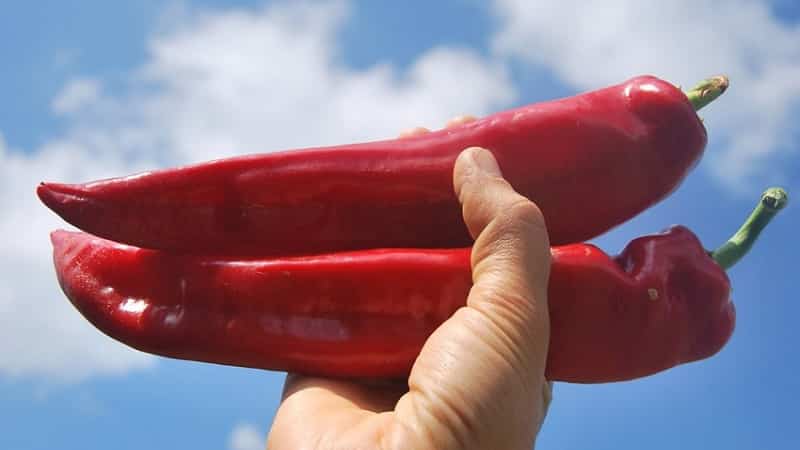
Characteristics and description of the variety
Pepper has an unusually sweet taste. Any bell pepper will seem bland after eating Ramiro.
The height of the plant reaches 90 cm, the bush is spreading, forming several stems at the base. The variety is classified as mid-season. Approximately 130 days pass from seed germination to harvest..
Distinctive features
A characteristic feature of the variety is the presence of creases at the tail of the stalk. Bushes are 1.5 times taller than usual. Many ovaries are formed.
Reference. The sweetness of the peppers is the hallmark of this variety.
Fruit characteristics, yield
The fruits are elongated, red, green and yellow, contain few seeds. The length of the peppers reaches 25 cm, the wall thickness is 0.5 cm, the weight is 90–50 g. The yield is 2–2.5 kg per 1 sq. m. Up to 2 kg of fruits are collected from one bush.
The photo shows the sweet fruits of the Ramiro variety.
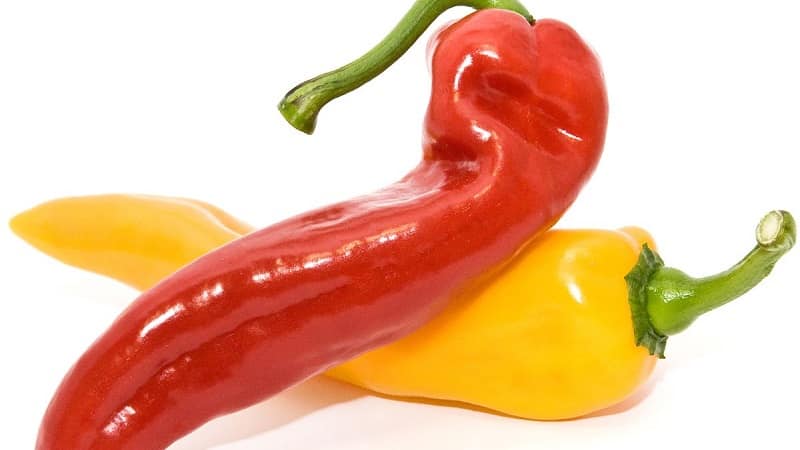
Preparation for cultivation
The time for sowing pepper depends on where you plan to grow the crop.. For open ground they are sown in February, for greenhouses - at the end of January. Ramiro pepper seeds are difficult to buy in specialized stores. Therefore, gardeners share planting material among themselves.
Soil preparation
You can buy it ready-made at the store or make it yourself, mixing humus (2 parts), sand (1 part) and garden soil (1 part). As a fertilizer, add one glass of ash per 3 kg of mixture.
Attention! Before sowing, such soil must be calcined in a microwave or oven.
Preparing and sowing seeds
The seeds are kept in water until completely swollen. You can use a 1% solution of potassium permanganate. Then they must be placed on a damp cloth or cotton wool for 2-3 days.
You can increase seed germination using growth stimulants, for example, a solution of the drug “Epin”, in which the seeds are placed for 4 hours, then washed with water.
Growing seedlings
Prepared seeds are placed in depressions 1–1.5 cm, water well and put in a dark place. Cover the top with film or glass. Seeds usually germinate the next day.
When growing seedlings with a pick seeds are sown in boxes. After the emergence of seedlings, the container is taken out to a lighted place.
Attention! The boxes should have drainage holes to drain excess water when watering.
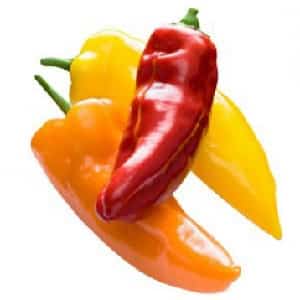 Optimal conditions are required for good seedling development.:
Optimal conditions are required for good seedling development.:
- daytime temperature up to +26 °C;
- night temperature not lower than +10 °C;
- moderate watering;
- ventilation 2-3 times a week;
- The photoperiod is at least 12 hours; for this, the seedlings are additionally illuminated.
Water with warm, settled water. It is not recommended to use cold water for irrigation.This is stressful for tender young plants. Excess moisture promotes the development of fungal diseases and root rot. The deficiency contributes to their drying out.
To stimulate root formation When watering, use potassium humate, add 5 ml per 2 liters of water.
After the second leaf appears seedlings are planted in cups with a diameter of no more than 10–12 cm.
When growing seedlings using the picking method plants need time to recover after transplantation. The optimal method is considered to be without picking, in which the seeds are planted directly into cups.
Two weeks before landing at a permanent place The seedlings begin to get accustomed to fresh air. The first time they take it out onto the balcony or veranda for an hour, then increase the time.
Planting pepper
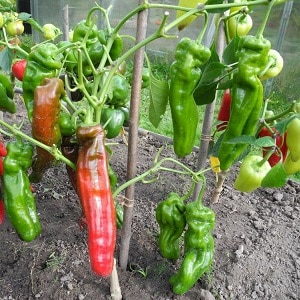 The Ramiro variety is suitable for planting both in open ground and in greenhouses. A week before planting, the soil is treated with copper sulfate for disinfection. Plants are replanted at the end of May or the first week of June.
The Ramiro variety is suitable for planting both in open ground and in greenhouses. A week before planting, the soil is treated with copper sulfate for disinfection. Plants are replanted at the end of May or the first week of June.
Bushes are placed at a distance of 40 cm, between rows - 50 cm. Planted in holes up to 15 cm deep together with a lump of earth from a cup. Planted in a checkerboard pattern to prevent overcrowding. The roots are sprinkled with earth and lightly compacted. Water well with warm water. Mulch with peat to maintain soil moisture.
After planting, it is not recommended to water or feed the seedlings for a week.. She needs time to take root.
Important! It is better to plant plants in cloudy weather, in the morning or evening.
Further care
Plant care is simple: weeding, watering, fertilizing, bush formation.
It is better to water the pepper in the morning or eveningso as not to be exposed to direct sunlight.Water with warm, settled water at the rate of 6 liters per square meter. m. The frequency depends on the stage of plant development. During budding - twice a week. At the stage of fruit formation and ripening, once a week is sufficient.
The soil is carefully loosened to increasing access of oxygen and nutrients to the roots.
This is interesting:
Top best early varieties of sweet peppers for open ground and greenhouses
To increase the yield of the Ramiro pepper variety, fertilizing is necessary. The first is carried out 16-17 days after planting. Use an infusion of mullein in a ratio of 1:15 or bird droppings in a ratio of 1:10 with water.
During flowering, it is recommended to spray with a solution of boric acid. at the rate of 2 g per 1 liter. This is necessary to strengthen the ovary. You can add a little sugar to attract pollinating insects.
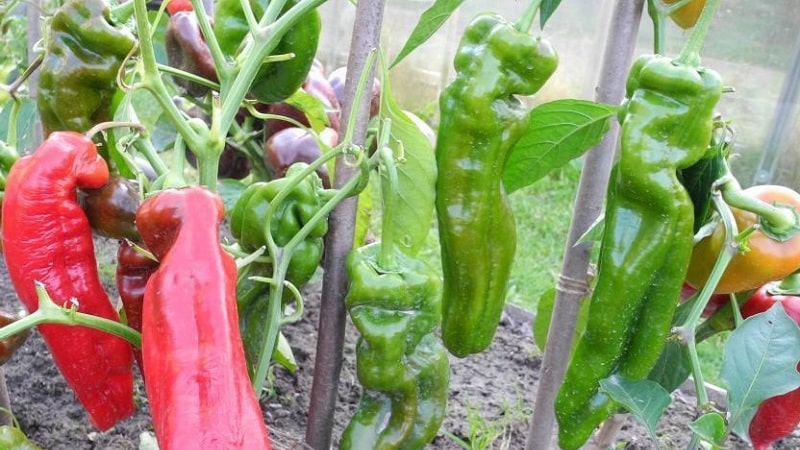
Another feeding is carried out after flowering, with a solution containing 20 g of potassium salt and superphosphate per bucket of water. Fertilizers help strengthen the root system and improve the taste of the fruit. To increase the fruiting period, this fertilizing is done again after the first harvest.
To reduce plant density, which leads to the development of diseases and pests, as well as to increase productivity, pruning is carried out. After reaching a height of 20 cm, the plant begins to branch.
Attention! To ensure further development of the pepper, the first inflorescence at the branching site is removed.
When the tenth leaf appears on the plant it is necessary to carry out the second stage of bush formation. Two or three shoots are left, the rest are cut off, including weak branches. It is recommended to leave 20–25 ovaries on the bush, this will help form large fruits.
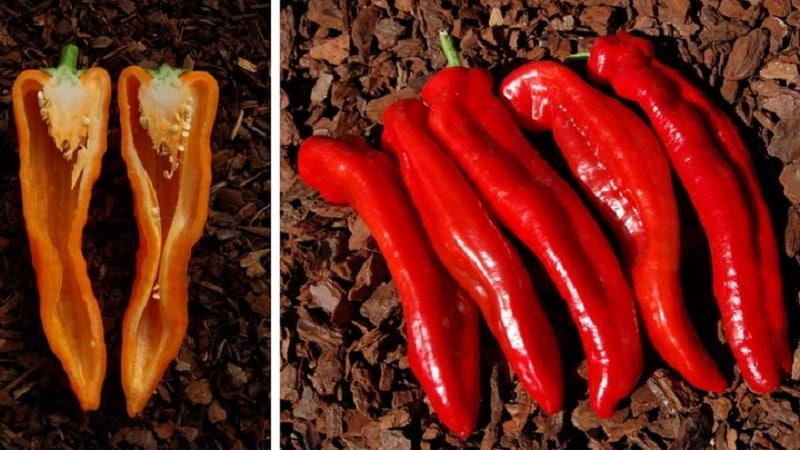
Features of growing the variety and possible difficulties
For planting peppers they use beds where cucumbers and zucchini were previously grown, carrots, onions, pumpkin, peppers. Do not plant after eggplants, potatoes and tomatoes.
The soil is prepared in the fall. Dig it up and add compost. In the spring, ammonium nitrate is added per 1 square meter. m 30 g to stimulate the formation of green mass.
To the plant moderate watering required: a deficiency affects the yield; if there is an excess, the roots rot. Mulching helps combat drying out.
The bushes are tall, the shoots are fragile and break easily, so Ramiro pepper needs tying to stakes. This is done when the height reaches 0.5 m.
For wind protection taller crops can be planted around the plant.
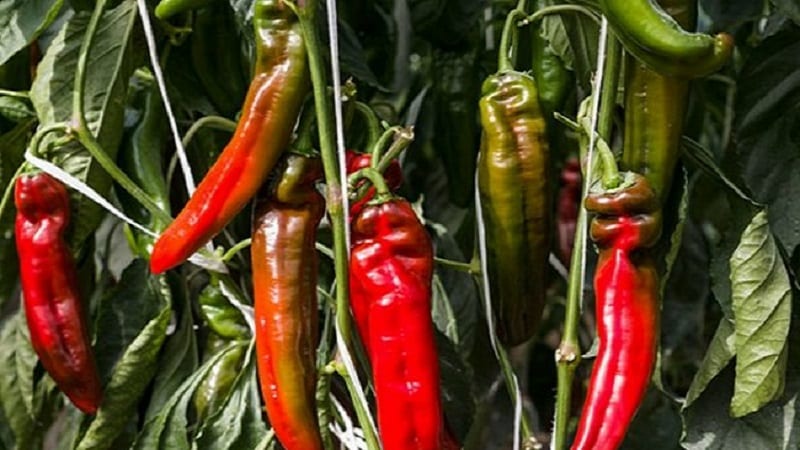
Typical diseases and pests
Experienced gardeners claim that regardless of the crop’s resistance to major diseases, inherent in any variety of peppers, preventive measures will not harm.
Prevention of fungal diseases - watering with warm water and reducing thickening, using fungicides “Barrier”, “Zaslon”, which strengthen the immune system. In case of significant damage, use drugs containing copper: Oxychom, copper oxychloride, Bordeaux mixture.
Attention! Any chemical treatment is stopped 3 weeks before harvest.
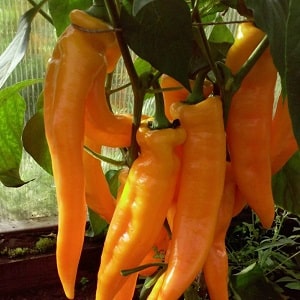 For Ramiro pepper, a disease is dangerous in which the leaves turn yellow and wither, the fruits become small and crooked - stolbur, or phytoplasmosis.
For Ramiro pepper, a disease is dangerous in which the leaves turn yellow and wither, the fruits become small and crooked - stolbur, or phytoplasmosis.
Weed control is the main preventive measure. If infection does occur, apply a double treatment with a 0.02% Karbofos solution.
From aphids treated with “Karbofos” or “Keltan”.To make the solution stick better to the plant, it is supplemented with crushed laundry soap.
When found spider mite treated with the following solution: take one glass of chopped onion (garlic), dandelion leaves per bucket of water, add a tablespoon of soap. Leave for several hours.
Slugs damage greens and fruits. For these pests, the bushes are treated with a solution of the drug “Strela” (50 g of powder per bucket of water).
Advantages and disadvantages of the variety
Among the benefits of Ramiro sweet pepper are::
- high productivity;
- grows well in a greenhouse;
- has excellent taste;
- juiciness and sweetness of the fruit.
Disadvantages include::
- growing by seedling method;
- The fruits do not last long.
Reviews
About sweet pepper Ramiro summer residents speak only positively.
Olga Leonidovna, Saratov region: “I grew Ramiro peppers with seeds collected from purchased peppers. I checked for germination and planted the seedlings. Although the fruits look small compared to other peppers, they have an incredibly sweet taste and pleased us with a large harvest.”.
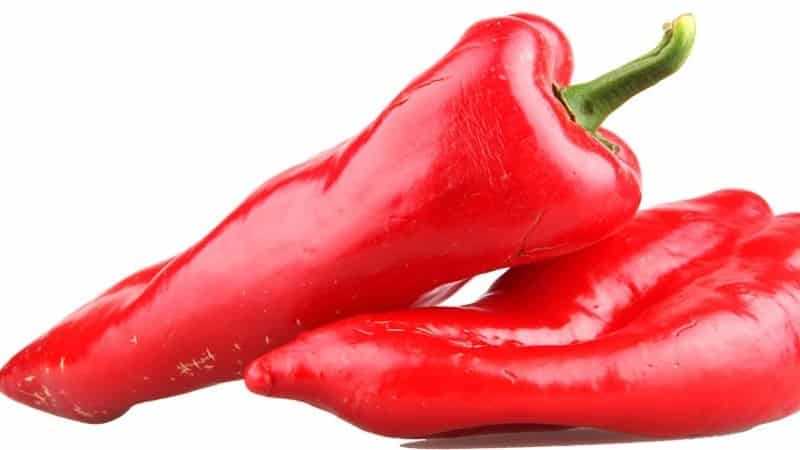
Anna, Moscow: “I managed to buy Ramiro seeds in the store. I planted it at the dacha, in a greenhouse. The appearance of the pepper is reminiscent of Chilean pepper, the flesh is sweet and tender. I’m considering it as an alternative to other types of pepper.”.
Vasily, Samara: “I tried Ramiro pepper from friends. I liked the appearance and taste, asked for seeds and planted them at home. The harvest was a success; I harvested about 2 kg of bright red fruits from each bush. I was satisfied".
Conclusion
Subject to all conditions of agricultural technology, even a novice gardener can grow delicious sweet fruits of Ramiro pepper. The minor drawback inherent in the variety - short storage of fruits - is easily solved.
Peppers can be frozen, and then in winter you will have a bright, sweet piece of summer on your table. Ramiro does not lose the sweetness of the fruit even after defrosting.